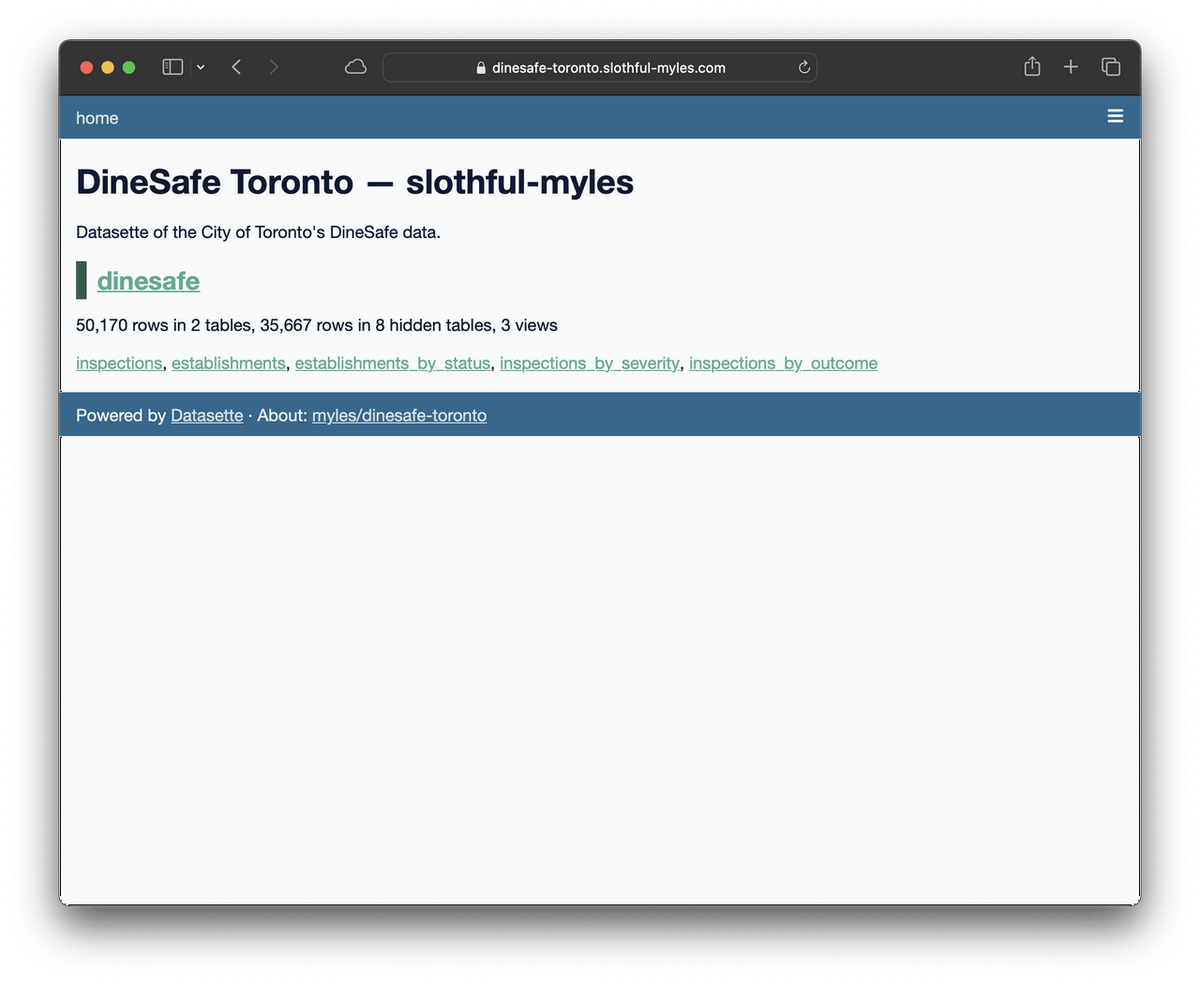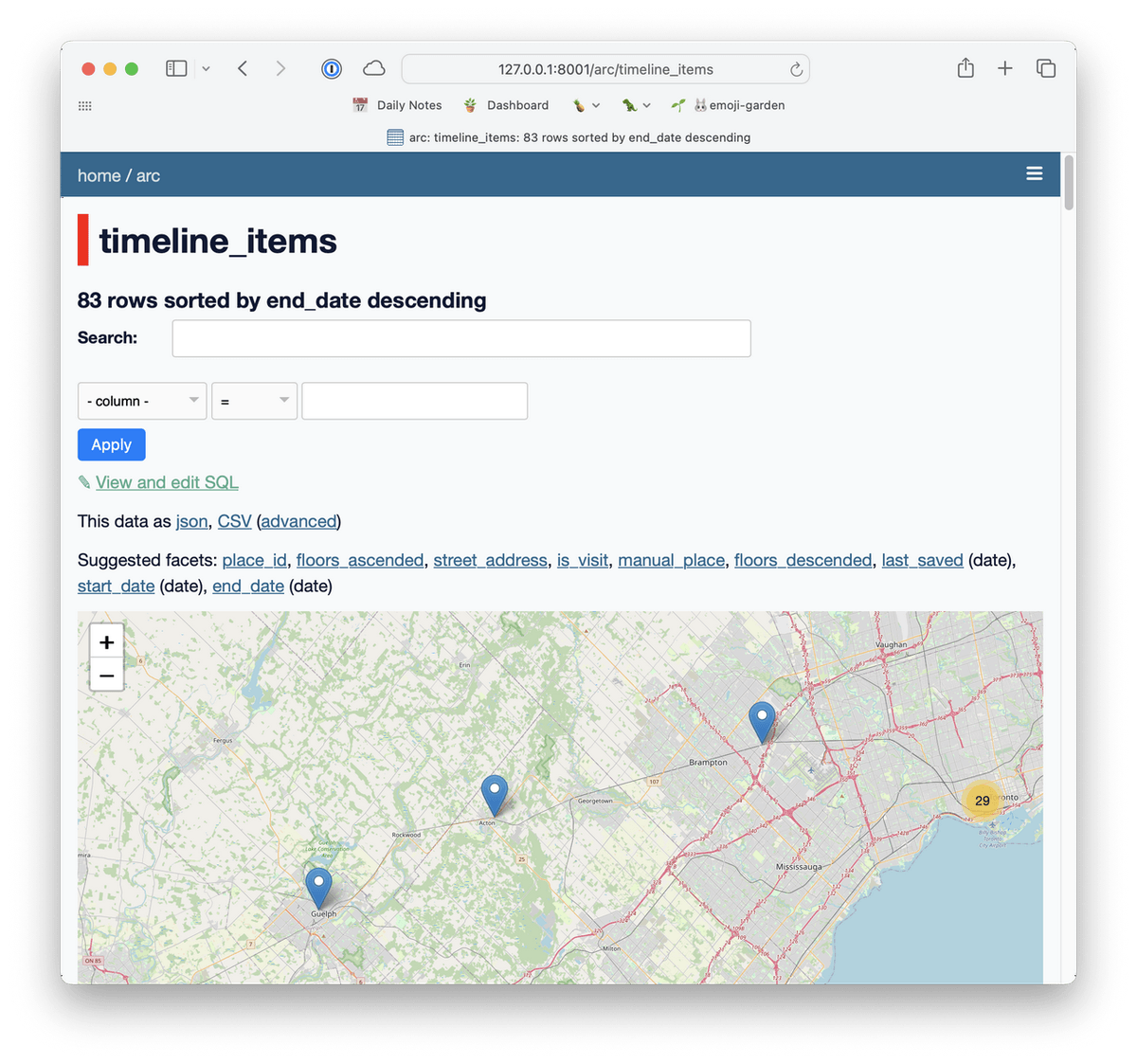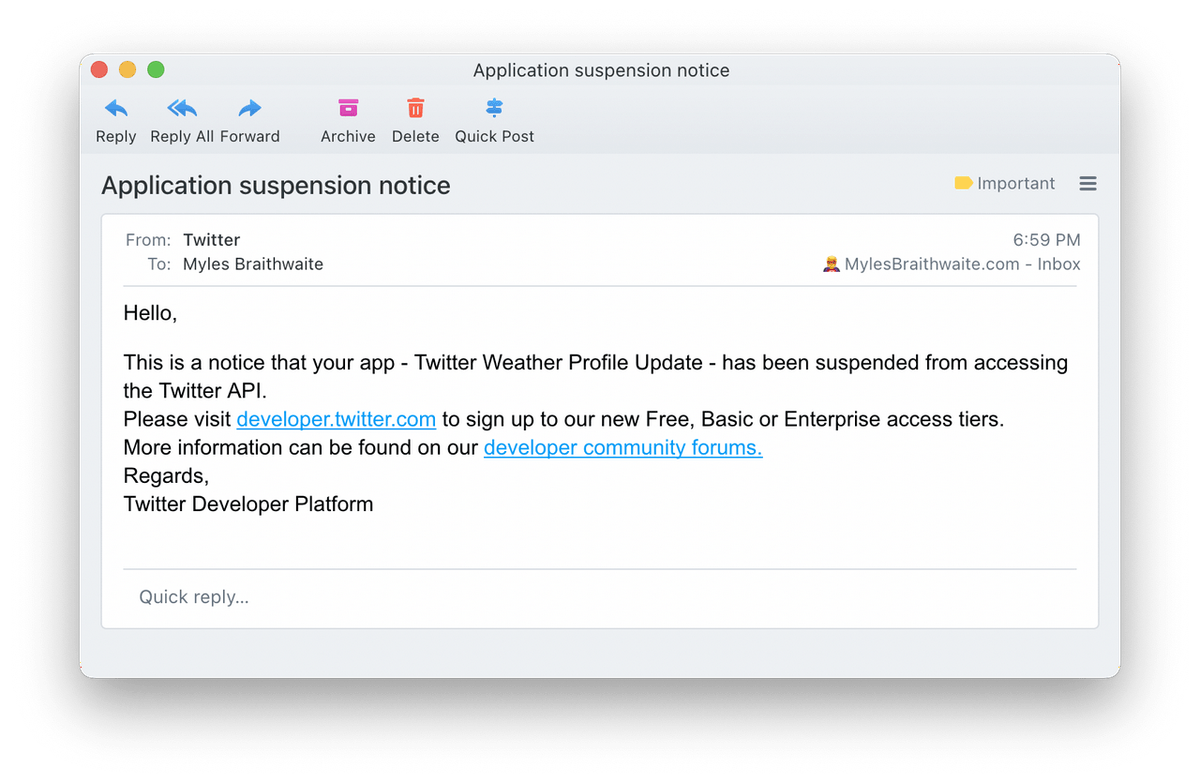
Building a Calendar Interface in Astro
How I built a static calendar interface in Astro using date-fns.
— myles
JSONFeed in Astro with @astrojs/rss
I wanted this website to publish both an RSS feed and a JSONFeed. The catch: I didn’t want to maintain two separate feed pipelines.
— myles

Broadacre City — Frank Lloyd Wright's Utopia Dystopia
Democracy… we have started toward a new integration—to an integration along the horizontal line which we call the great highway.
— myles

Icebergs can get stuck on underwater mountains
The current largest iceberg, A-23A, is currently spinning in place on top of an underwater mountain:
— myles

Exploring Toronto's Restaurant Inspection Data with DineSafe
As a lover of good food, I’ve always been curious about restaurant health inspections. So, I decided to take matters into my own hands and create a tool that makes it easy to explore Toronto’s DineSafe data.
— myles

Arc App's JSON Export to SQLite
I started working on a Dogsheep utility for processing Arc App’s Daily (or Monthly) JSON exports into a SQLite database. This provides the ability to analysis the places I visit and activities I am doing in Datasette.
— myles

😢 My Stupid Weather Twitter Profile Bot Got Suspended
My little weather-updating Twitter bot was finally suspended after seven years.
— myles